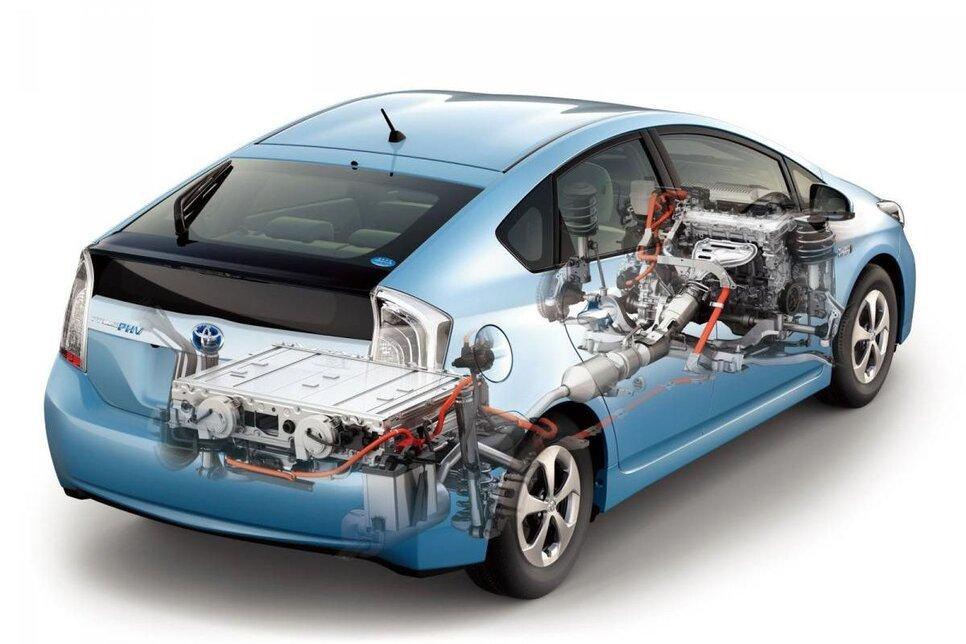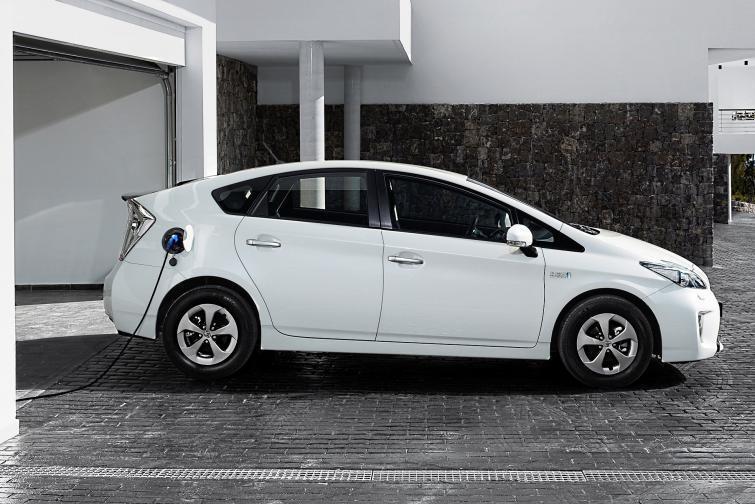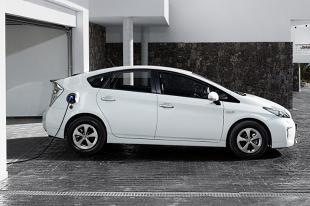
Will electric and hybrid cars replace conventional gasoline cars?
 Remember the good Melex that the administration staff used to fix a leaking faucet? As a child, I always wondered why my father's big Fiat smokes and makes noise, but your plumber's Melex drives silently.
Remember the good Melex that the administration staff used to fix a leaking faucet? As a child, I always wondered why my father's big Fiat smokes and makes noise, but your plumber's Melex drives silently.

My friends and I couldn't understand why my dad's car couldn't be plugged in and Meleks never went to the gas station. Who knows, maybe in 15-20 years, children will no longer have this dilemma. They will be silent, playing with the springs, instead of imitating the sounds of the engine.
Two engines
Twenty years ago, hybrid technology seemed out of reach. Timid attempts to build mixed-type cars did not bring the expected results. The high costs of building drive systems did not lead to economical driving, and prototypes stuffed with electronics often broke down.
The breakthrough was the Toyota Prius, the first mass-produced hybrid car. The five-door hatchback based on the Echo model (American Yaris) received a 1,5-liter gasoline engine with 58 hp. The Japanese connected it to a 40-horsepower electric unit. In Europe and North America, the car went on sale in 2000, but was previously upgraded. The power of the gasoline engine has increased to 72 hp, and the electric one to 44 hp. A car that consumes 5 liters of gasoline per hundred in the city was a serious warning to competitors whose gasoline subcompacts needed at least twice as much fuel.
In twelve years, the production of hybrid cars has not replaced the classic internal combustion cars, but progress portends that soon such a scenario seems more and more real. Example? The new Toyota Yaris, which consumes only 3,1 liters of gasoline in the urban cycle, and with large traffic jams, fuel consumption is less. How is this possible? The system uses only the electric motor during parking or traffic jams. The car can drive on it continuously for a distance of up to two kilometers. During this time, he does not use a drop of gasoline. Only when the batteries are discharged does the internal combustion engine start.
Maintenance-free batteries are charged automatically. The energy they need is restored during movement, for example, when braking. The internal combustion engine then stops and the electric motor begins to charge.
How to drive such a car? For the average user, the experience can be shocking. Why? First, the car does not have a key. Start the engine with the blue button instead of the ignition switch. However, after pressing it, only the indicators light up, so the driver instinctively restarts first. Without the need. The car, although it does not make any sounds, is ready to move. It does not make any noise, because when you press the button, only the electric motor starts. To hit the road, simply shift the automatic transmission to position "D" and release the brake pedal.
Same functional
Later, the driver's task is only to control the steering wheel, gas and brake pedals. The operation of the hybrid drive is displayed on a large color display in the center console. You can check which engine is currently running and adjust your driving style to be as fuel efficient as possible. We also have a charging and economical or dynamic driving indicator next to the speedometer on the instrument panel. You can switch to electric drive mode by pressing the button next to the handbrake lever.
The use of a hybrid drive does not limit the day-to-day functions of the car. An additional engine is placed under the hood, and the batteries are hidden under the rear seat. The space in the middle and in the trunk is the same as in a car with a classic gasoline engine.
The disadvantage of the hybrid Toyota is, first of all, the limited availability of the service. Not every mechanic will repair a hybrid car, so in the event of a malfunction, a visit to an authorized service is usually left. The prices for such cars are also still high. For example, a hybrid Toyota Yaris in the cheapest version costs PLN 65, while the basic version of this model with a petrol engine costs PLN 100.
A Toyota Yaris with the same equipment as a hybrid, with an automatic transmission and a 1,3 petrol engine with a power comparable to a hybrid, costs PLN 56500, which is PLN 8 600 cheaper.
Is it worth paying more for a greener car? According to the car manufacturer, definitely yes. Toyota experts have calculated that at a distance of 100 km, with a fuel price of PLN 000, the hybrid will save PLN 5,9. Since there is no generator, starter and V-belts either, and the brake pads wear out much more slowly, you can throw even more into the piggy bank.
Eco-friendly but with fire
But saving is not everything. As the Honda example shows, a hybrid car can be just as fun to drive as a sports car. Another major Japanese concern offers a four-seat CR-Z model.
The car has a 3-mode drive system that allows you to choose from three driving modes. Each uses a different setting for throttle, steering, air conditioning, combustion engine shutdown time, and use of the electrical powertrain. As a result, the driver can choose whether he wants to travel very economically or enjoy sporty performance.
Peugeot 508 RXH — test Regiomoto.pl
The lowest fuel consumption of 4,4 liters per hundred is achieved in ECON mode. The NORMAL mode is a compromise between driving dynamics and economy. In both cases, the tachometer is illuminated in blue, but when the driver is driving economically, it turns green. Thus, we know how to drive a car in order to use as little fuel as possible. In SPORT mode, the tachometer is illuminated in fiery red. At the same time, the throttle response becomes faster and sharper, the IMA hybrid system provides faster power transfer, and the steering works with more resistance.
The Honda CR-Z hybrid is powered by a 1,5-liter petrol engine assisted by an IMA electric unit. The power and maximum torque of this duo is 124 hp. and 174 Nm. Peak values are available as early as 1500 rpm, as in dual compressor petrol vehicles or turbodiesel engines. It's also the same performance as the 1,8 petrol Honda Civic, but the hybrid emits significantly less CO2.. Also, the Civic engine has to be revved higher.
Citroen DS5 - a new hybrid from the top shelf
In the Honda CR-Z, the transmission works a little differently. An electric motor can be compared to a turbocharger supporting the operation of a gasoline unit. Purely electric driving is not possible here. Another difference is the sporty manual transmission (most hybrids use automatic transmissions).
Fuel from socket
Automotive market experts predict that in 20-30 years hybrid cars have a chance to occupy up to a third of the automotive market. Manufacturers will resort to this type of drive due to tightening exhaust emission standards. It is possible that cars powered by hydrogen or electricity will also become a strong player in the market. The first fuel cell-powered Honda FCX Clarity is already in use in the US. Sales of electric vehicles are growing even faster.
Poland may introduce subsidies for hybrid cars
The first mass-produced car with such a drive is the Mitsubishi i-MiEV, introduced last year in Poland. By design, the car is based on the "i" model - a small city car. The electric motor, converter, batteries and the rest of the eco-friendly drive are installed at the rear and between the axles. A one-time battery charge allows you to drive about 150 km. The lithium-ion battery is located under the floor.
Mitsubishi i-MiEV can be charged in several ways. At home, a 100 or 200 V socket is used for this purpose. Batteries can also be charged at fast charging stations, which are networked around the world. Charging time from a 200V socket is 6 hours, and fast charging takes only half an hour.
The innovative drive is the only feature that distinguishes the electric Mitsubishi from classic cars. Like them, the iMiEV can take four adults on board. It has four wide-opening doors, and the luggage compartment holds 227 liters of cargo. By the end of 2013, Poland will have a network of 300 charging points located in 14 major Polish agglomerations.
Governorate Bartosz
photo by Bartosz Guberna